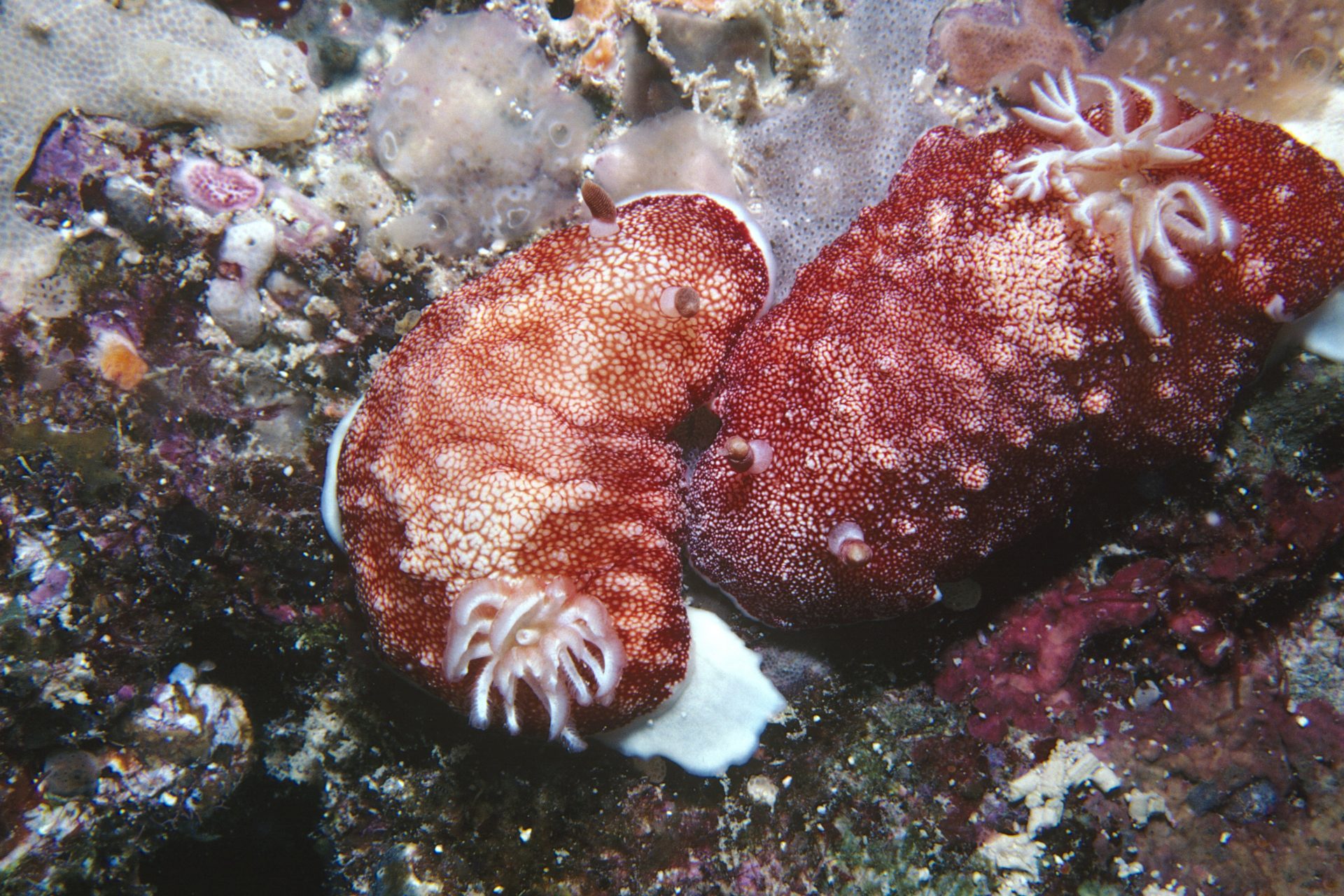Stunning, otherworldly sea slugs of all colors
Sea slugs are common in the waters around Japan. They have a strange appearance with their wavy bodies, protruding horns, and bushy gills.
Despite their eccentric appearances, sea slugs, like this Azore type, are in the snail shell family. The Osaka Aquarium Kaiyukan notes that the larvae often have shells.
Sea slugs are sometimes called the 'jewels of the sea' because of their fantastic appearance. In the waters around Japan, they can be found in tide pools and shallow waters, making them a popular subject for observation among divers and animal lovers.
Their ecology varies depending on the species. Generally, they live on sponges and sea squirts, but some eat poisonous jellyfish, and others photosynthesize using chloroplasts taken from algae. Most species are small, only a few centimeters in length, but according to the Kaiyukan website, there are also large species that can reach tens of centimeters in length.
Sea slugs usually hide quietly at the bottom of the ocean, exuding a mysterious charm. Let's have a look at some examples of these colorful and graceful sea slugs.
The most representative sea slug that can be found in Japan is the green sea slug. It has a flashy color scheme of a blue background with yellow borders and orange antennae, and it lives in shallow waters all over Japan, from Hokkaido to Kyushu.
Image: Photo AC
On the other hand, the yellow sea slug stands out with its unique appearance of black spots on a yellow surface covered in white spikes. The photo was taken on the Izu Peninsula but the yellow sea slug is found around the world.
To get an idea of their size, this slug poses on a sponge. It always seems ready to go to bed and got the name 'pajama slug'. Is it resting on this sponge or having a meal?
Next up is a cute pastel-colored sea slug. The photo was taken in Indonesia, but the ones found in Japan tend to be ivory-colored or white.
The yellow-spotted sea slug has a white body dotted with yellow and orange spots. Despite its cute appearance, it is known as the gangster of the sea slug world because it preys on other sea slugs.
We tend to think of sea slugs as creatures that crawl along the ocean floor, but some can actually swim by flapping their bodies. This sea slug is called the 'Spanish Dancer' because it dances in the ocean and looks like it's wearing a flamenco costume. By the way, this is a large species that can reach a total length of 60 centimeters.
This white-banded sea slug has a beautiful wave pattern on its cream-colored back. It has a habit of fluttering its frill-like mantle.
Yes, this one is called 'The Elegant Slug', even though we think they are ALL elegant! This specific horned creature sometimes has yellow tips on its spikes, the Kaiyukan Aquarium claims, and you can find it in the Japanese seas of Okinawa.
This species of Sakishima sea slug stands out for its psychedelic coloring. All sea slugs have fluffy protrusions on their backs, but the one you see here is not just for fashion. Some species absorb stinging cells (i.e. poisonous stingers) from their food, jellyfish, and sea anemones, and store them in the protrusions on their backs to protect themselves.
As its name suggests, the spotted sea slug boasts a simple yet sophisticated design of black spots on a white background. It lives in warm seas, for example in Japan's Kyushu and Okinawa Prefecture.
The yellow tiger sea slug has a striking color contrast. Because its pattern resembles a smiley face it was once called the 'smiley-face sea slug.'
This sea slug with graceful frills around its body is called the meringue sea slug and can be found in Okinawa Prefecture in Japan.
This is a species of the genus Asclepias. The purple spots on a white background make it look like something out of a fairy tale.
Leopard print is prevalent with certain generations of fashion, but there are also some leopard-print sea slugs in the world. In Japan, they can be found in the seas of Okinawa and Wakayama prefectures.
This is a type of sea slug in the genus Polytrichum. It looks a bit like a snail, so it makes sense that sea slugs are also part of the gastropod family.
As its name suggests, the starry sea slug is particularly eye-catching with its starry sky-like pattern. According to the Churaumi Aquarium website, it lives by eating pale purple sponges.
At first glance, this slug looks plain due to its black body, but the neon orange color of its antennae and gills add an accent that gives it quite a cool charm.
The tropical colors orange, yellow, white, and purple of this slug can be seen in the Japanese seas of Okinawa, Wakayama, and the Izu Peninsula.
The elegant wine-red Chilean sea slug has an unusual ecology. According to the Science Portal website run by the Japan Science and Technology Agency, this sea slug cuts off its c0pulatory organs every time it mates but quickly regenerates them. It is the only creature known to do this.
By the way, do you know how sea slugs are born? The color and shape vary depending on the species, but sea slug parents generally lay a spiral-shaped egg mass like the one in the photo. Sea slugs are hermaphroditic, with the front part of the body being male and the back being female.
The last bizarre creature we'll introduce in this gallery is the sea slug's companion, the emperor shrimp. It lives hidden on the surface of slugs and sea cucumbers. The shrimp eats dead organic material but can also rid the animals in its vicinity of parasites. A good friend.
Follow Showbizz Daily to stay informed and enjoy more content!





































